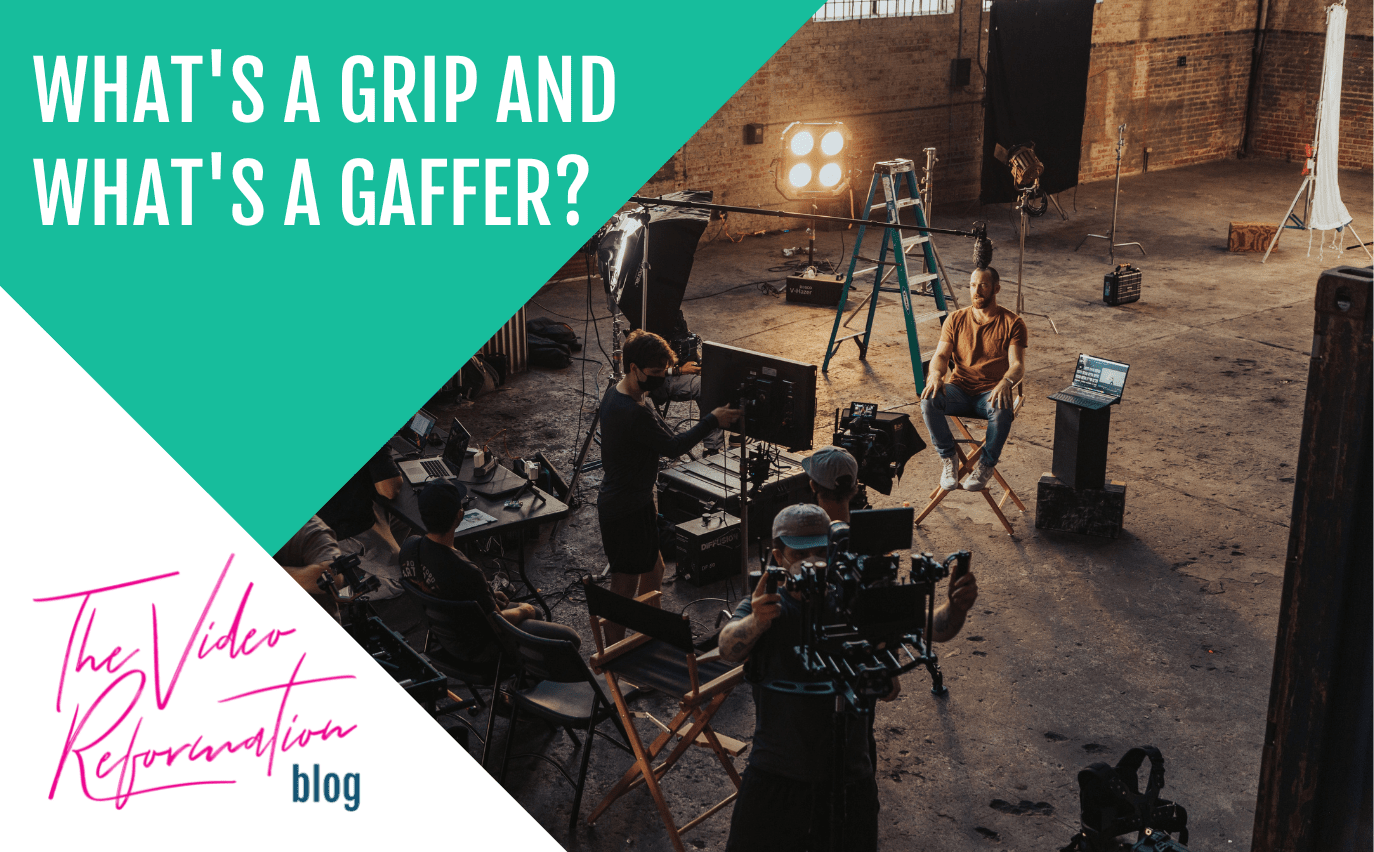Even if you’re not a video production veteran, you can likely describe what certain top-line crew members do based solely on their titles. A director directs. A producer produces. An editor edits.
Yet, the further you scroll down the call sheet, the more likely you will encounter a variety of roles that are just as essential to production yet don’t fall into that straightforward naming convention. Two of the most common examples are the grip and gaffer.
No, a grip doesn’t require Olympic-level hand strength to excel at their work. And a gaffer prone to gaffes is more likely to get fired than to experience a prolonged career in the gaffing arts.
So, what does the grip do? And what does the gaffer do?
To make things more transparent and highlight these crucial yet oft-forgotten roles, we wanted to dig deep to explain how grips and gaffers contribute to the B2B video production process.
What is a Gaffer?
While lighting a space may seem simple for those who’ve operated a light switch, lighting a video production is a much more complex endeavor. Every shooting location is unique, with its own quirks that can affect the light of a set or shooting location.
Since video is a visual medium that relies on light to ensure everything looks how the director and director of photography intended, there needs to be someone responsible for the lighting of a production.
That person is the gaffer.
Gaffers begin their work with the completed script. During their read-through, they’ll take note of potential lighting needs and start working up a plan for lighting the production.
During the pre-production phase, they’ll also collaborate with the director and director of photography to understand their vision for lighting. (Regarding the production hierarchy, gaffers report directly to the DP.) Then, working within the budget, the gaffer will find the right lights and equipment to carry out that vision. Often, the gaffer owns said equipment (“a truck”), or has connections through which to source any specialty lighting equipment.
Depending on the needs and size of the production, the gaffer may bring on additional crew to help set up lights and the electrical equipment needed to run those lights. In most small-scale productions, a gaffer can operate as a one-person band, ensuring the right lights are set up in the right place and working as intended.
Once the video has reached the production phase, the gaffer will observe and supervise the lighting. If adjustments are needed, they or someone from their crew will make the necessary changes.
If the blocking of a scene causes on-screen talent not to be well-lit or if what looked good on paper doesn’t match the reality of production, the gaffer engages in creative problem-solving to ensure the director’s vision is still met.
Even when shooting on-location outdoors, gaffers are a necessary member of the crew. The sun, as it turns out, moves from one end of the sky to the other throughout the day. The more you know.
If the light changes too dramatically, the end of a scene will look much different than the beginning of one, and editing various takes together will result in a deliverable that seems lit by someone playing with a flashlight.
In these situations, the gaffer comes to the rescue, utilizing tricks and tools to maintain a consistency of light as needed. This allows the director and director of photography to capture their vision even if our messy diva of a sun isn’t cooperating.
What is a Grip?
A director and DP have a vision for the production. Next, the gaffer designs a lighting scheme that enables that vision. The grips, then, are the ones who work with the gaffer to execute the design.
While gaffers can be hands-on, especially on small productions, it’s typically the grips that do the physical work to ensure a scene is appropriately lit. They’ll focus the lights, run cables, and ensure it’s done safely.
Depending on the size of the production, grips may also place camera equipment, set up and strike sets, and build scaffolding.
While some grips may have specialized training in electrical engineering, most learn their skill on the job; the grip often serves as an apprentice to the gaffer, learning the complexities of lighting while doing the heavy lifting, so to speak.shoot. Their work takes place almost entirely during the production phase, but without them, lights could be pointed in the wrong direction, and cameras may lack the equipment to get the perfect shot.
Does Your B2B Video Production Need a Grip or Gaffer?
So, if your production requires light — and if it doesn’t, it better be an animated video — somebody is going to be responsible for the lighting equipment. Smaller productions may roll several roles into one — such as a DP also serving as a gaffer or a gaffer also acting as a grip — but you’ll need to fill these roles regardless.
As both roles work under the DP, the DP will likely have some input on the hiring process. Hopefully, they can also recommend people they’ve worked with in the past, making it far easier to hire someone who can align with the vision behind the production.
Hire the Right Crew By Knowing What They Do
Grips and gaffers are an essential part of the production process. Understanding their work and how it relates to others on your crew will make for an easier video shoot and better enable your director to carry out their vision.
For more info, tips, and strategies on the video production process, bookmark the Video Reformation blog.

